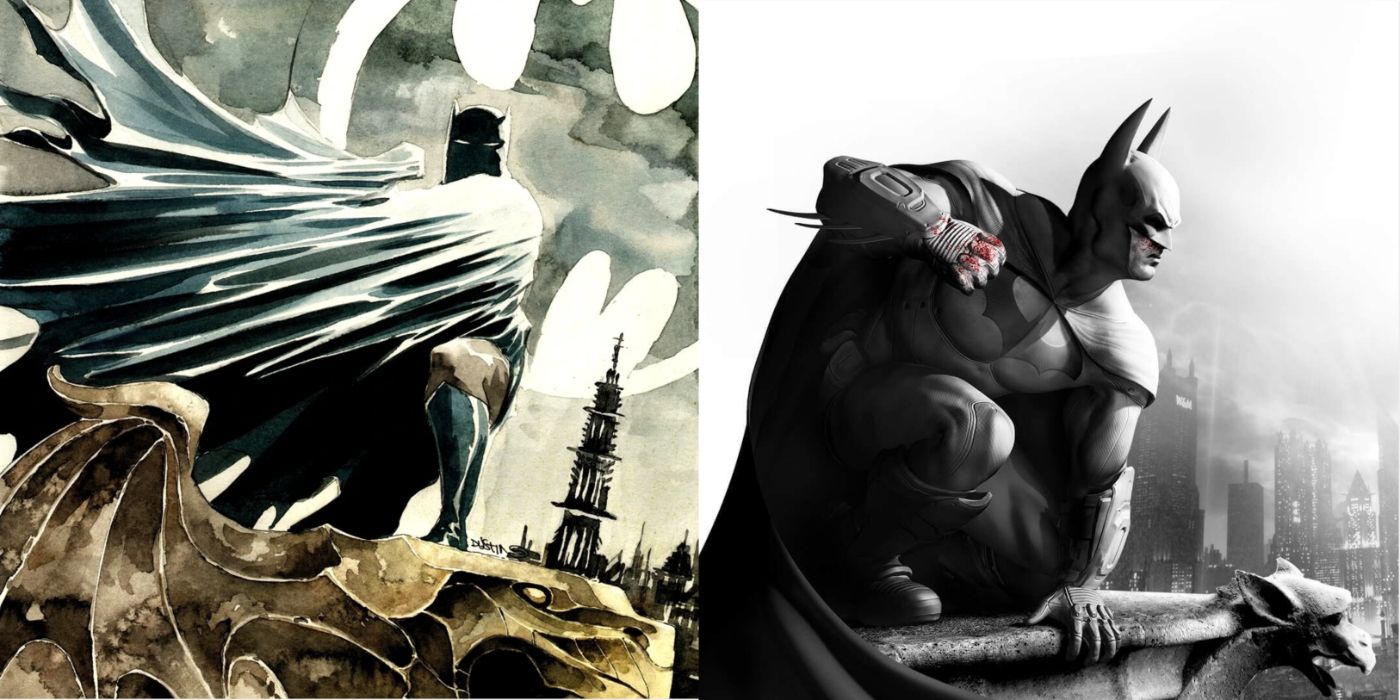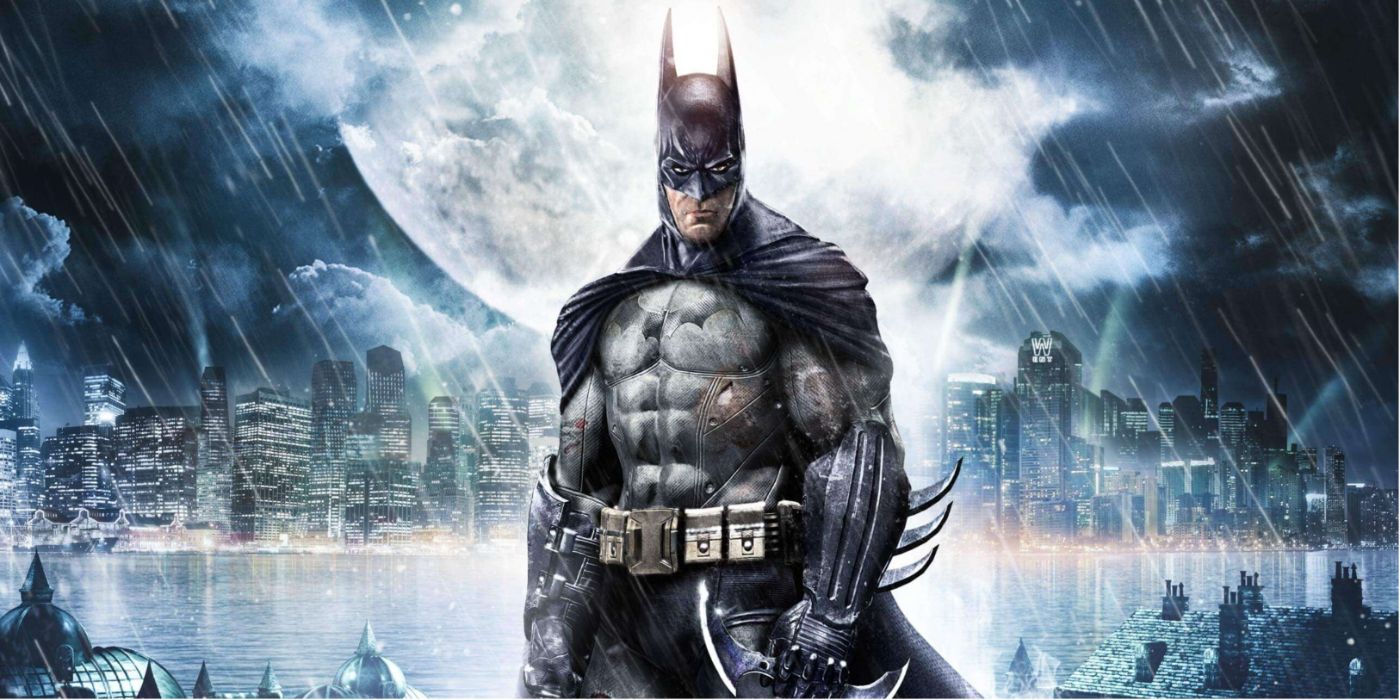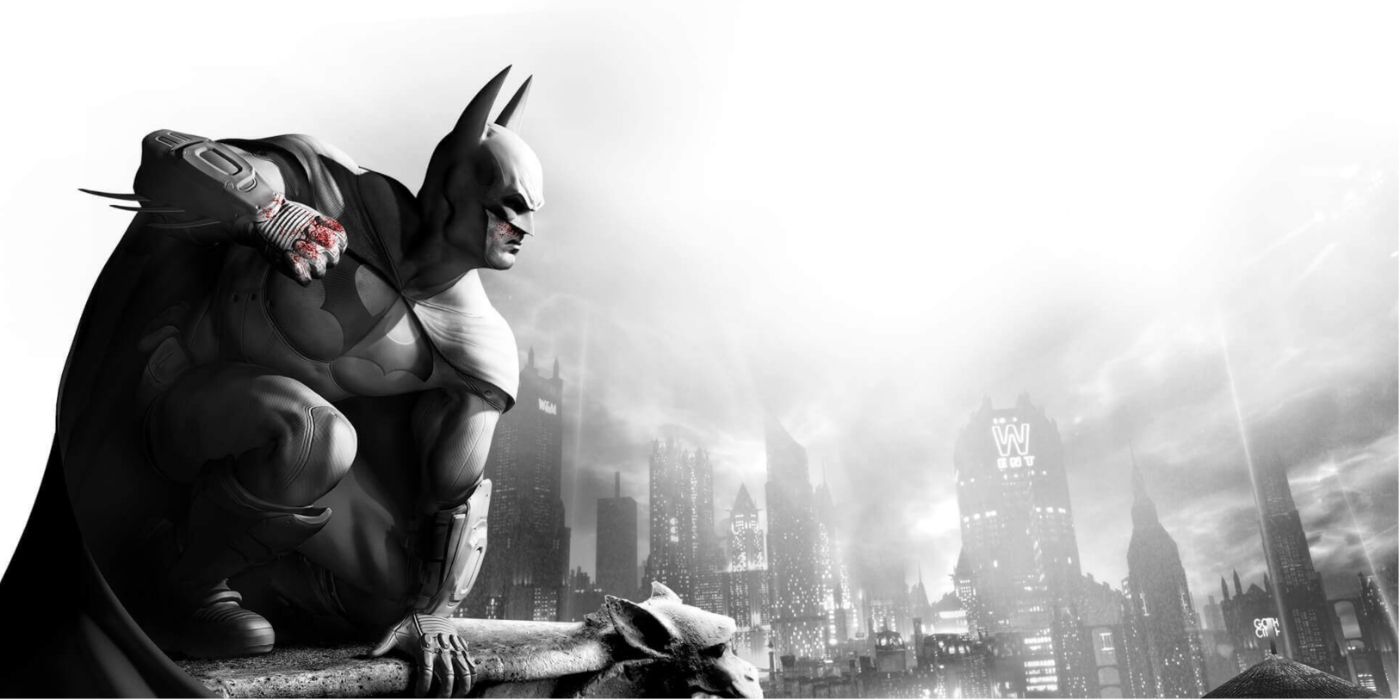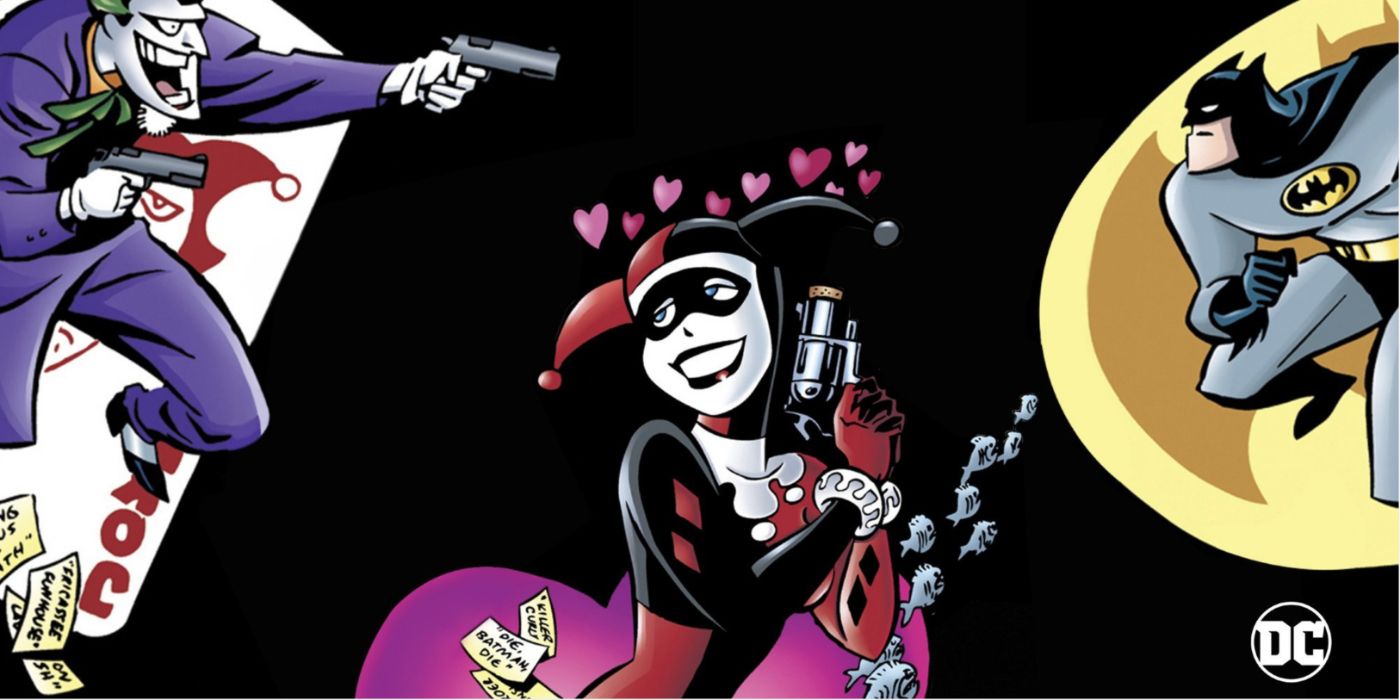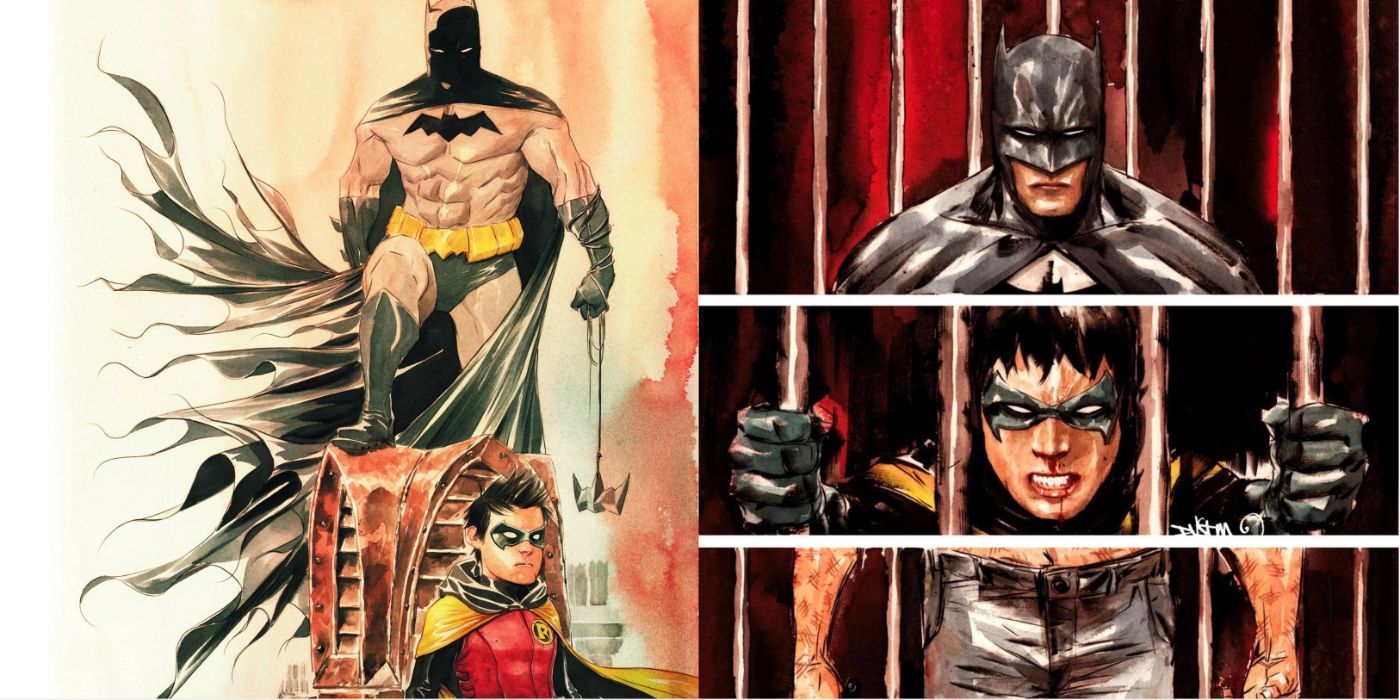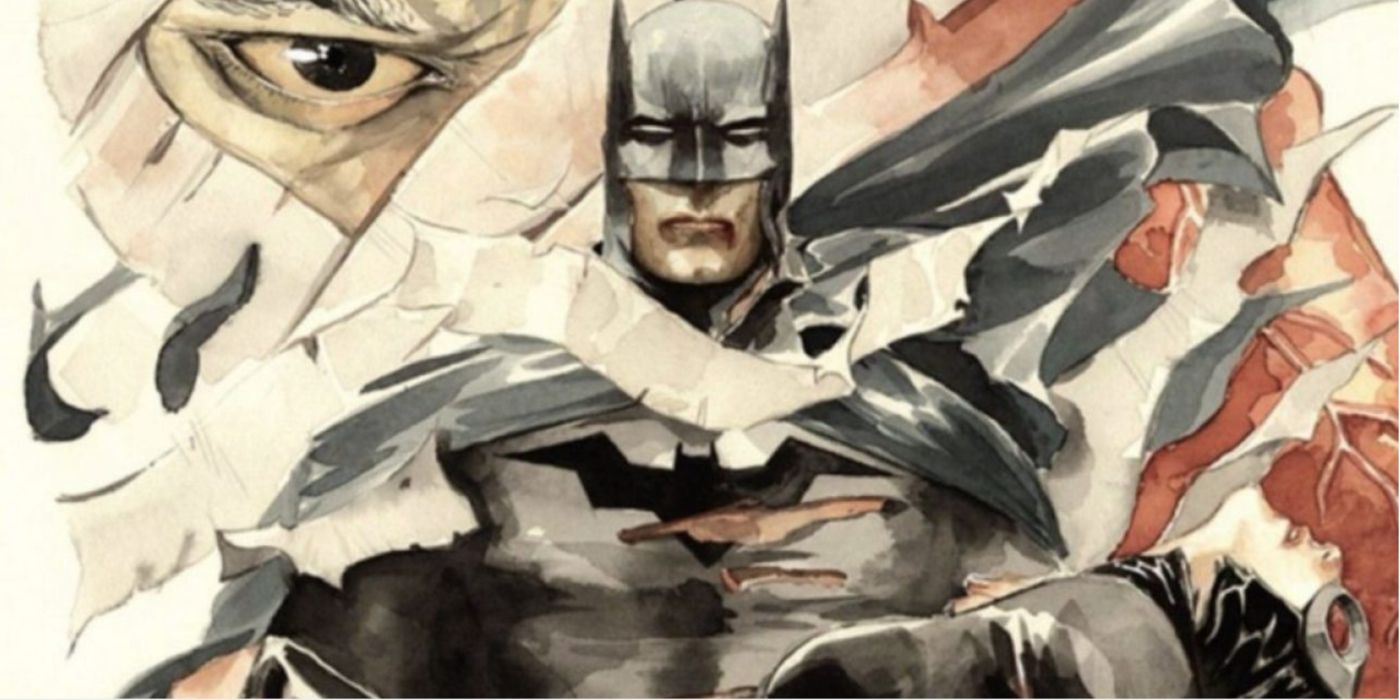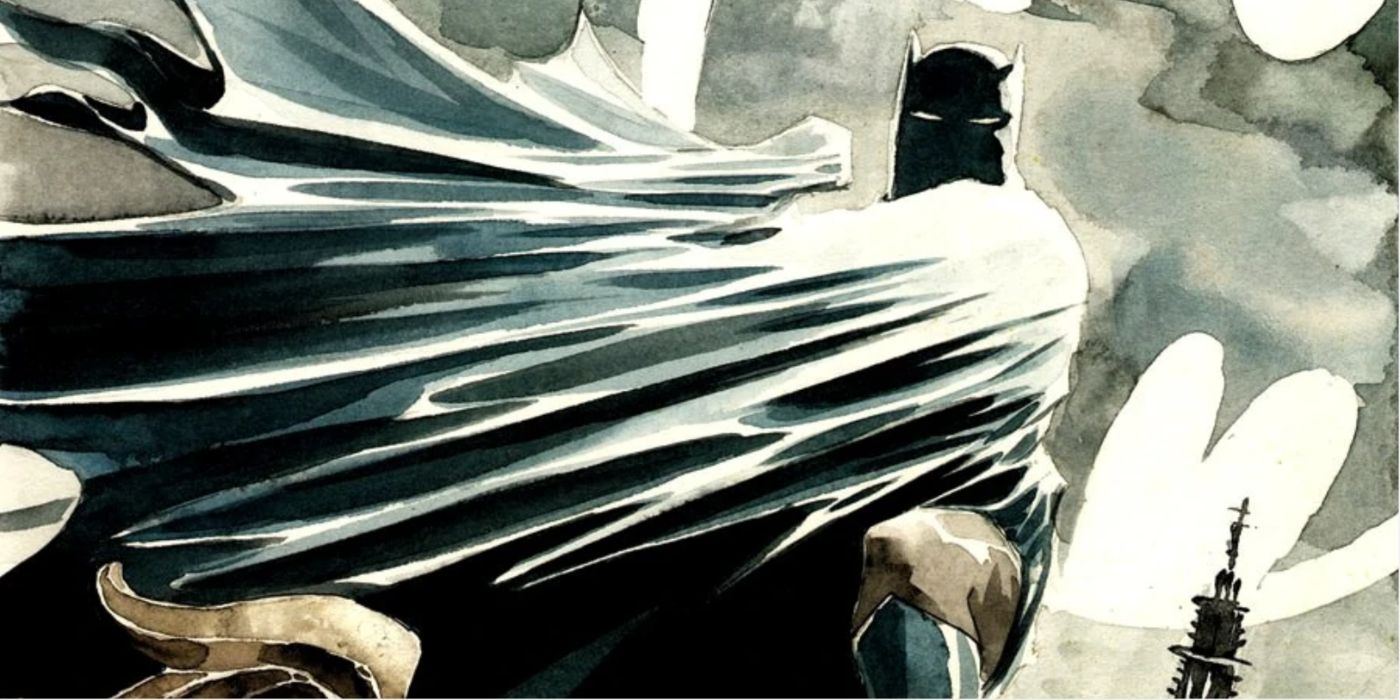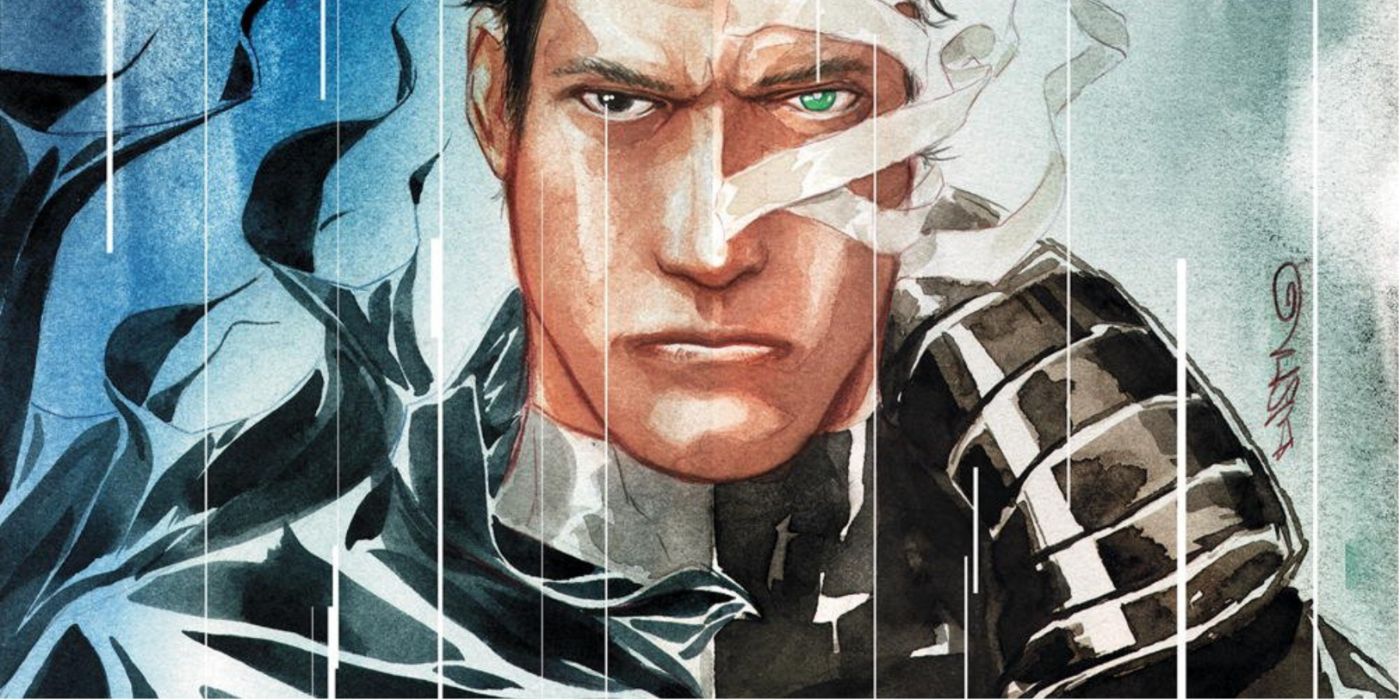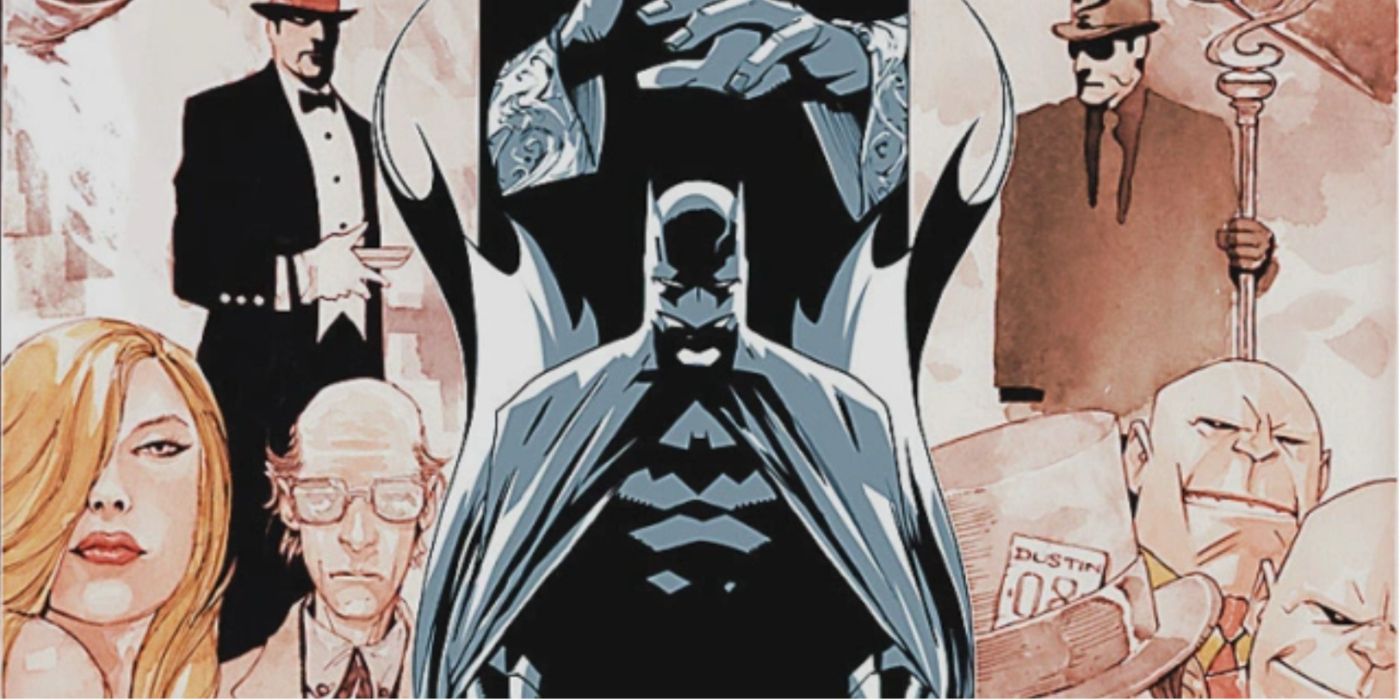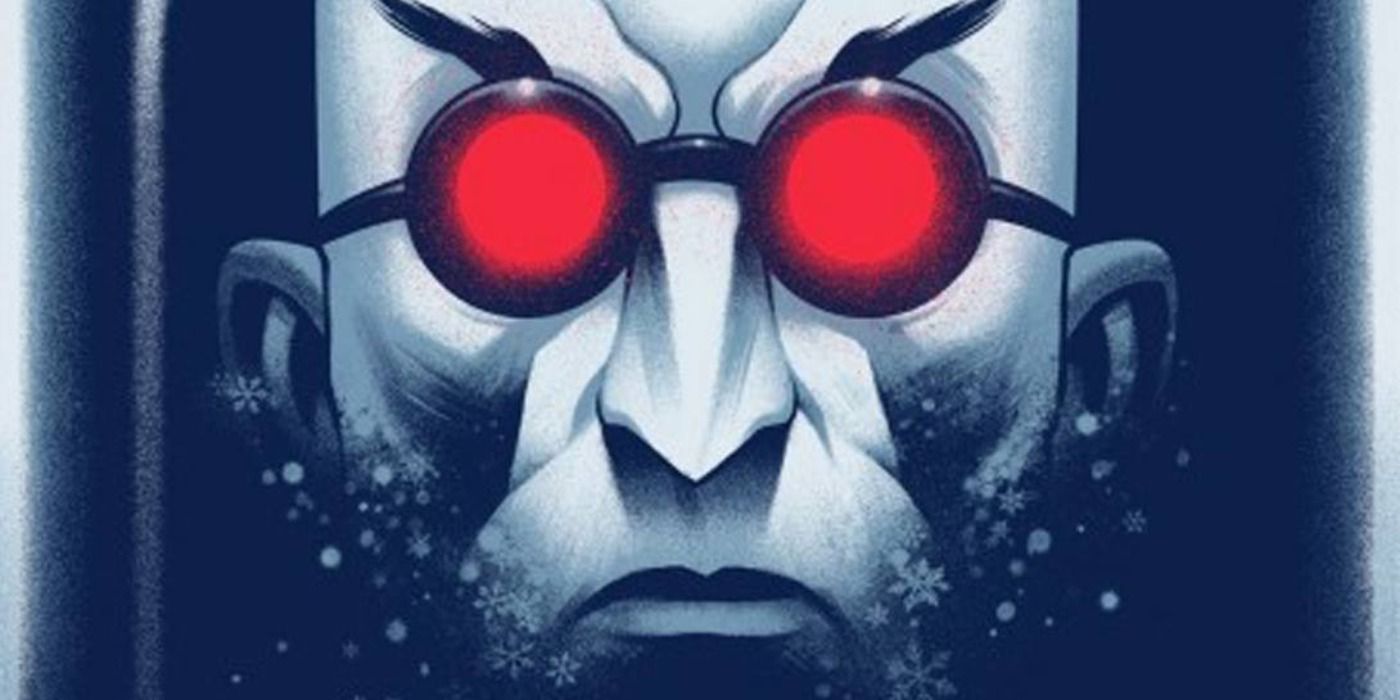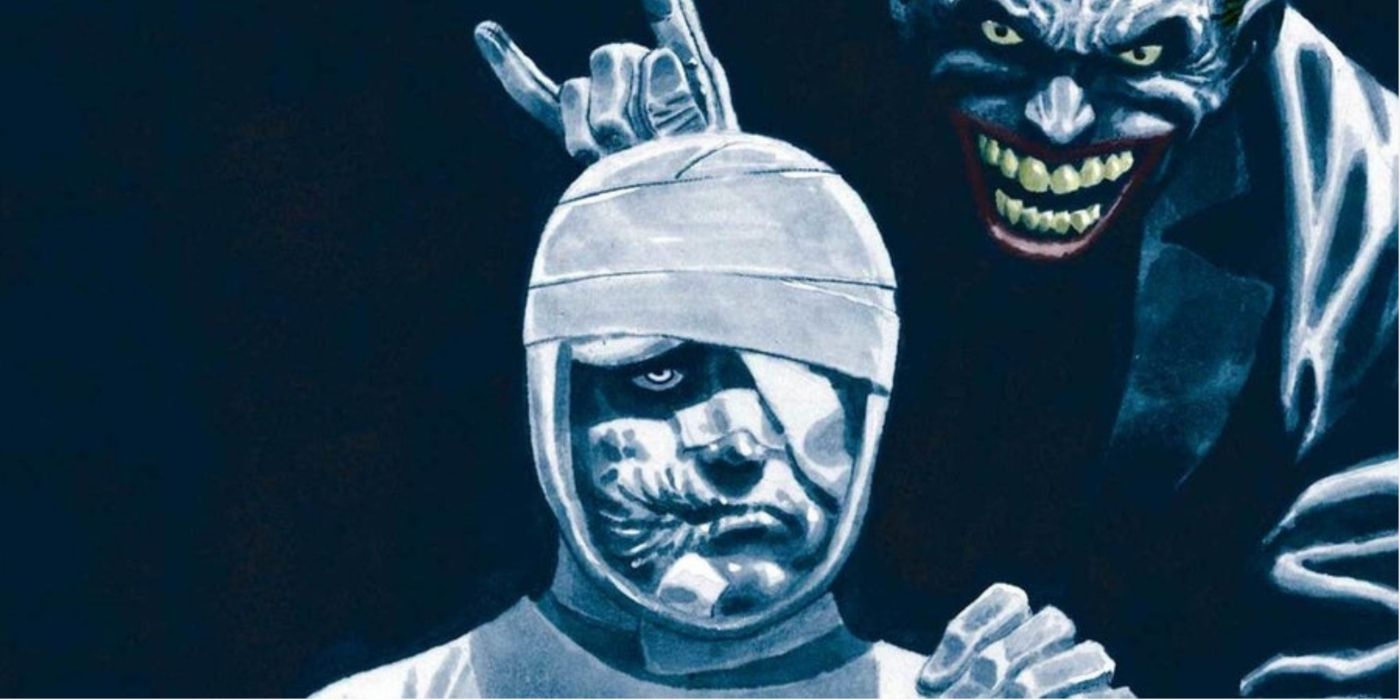As proven by the recent commercial and critical success of The Batman, the Dark Knight Detective's influence on pop culture is still a force to be reckoned with. And when it comes to DC Comics and its beloved brooding superhero, Paul Dini has a place in a pantheon of top-tier Batman writers.
Dini is responsible for many acclaimed stories with the character spanning multiple mediums in addition to the comic book source material. Whether it's the landmark story "Mad Love," the gritty crime-noir of Batman: Streets of Gotham, or his revelatory work with Rocksteady's Arkham Asylum and Arkham City video games, Dini has more than earned his place in Batman's legacy.
Arkham Asylum
Paul Dini was part of the masterful team behind Rocksteady's Batman: Arkham Asylum video game. Taking inspiration from his own work on Batman: The Animated Series and comics such as Morrison's Arkham Asylum: A Serious House on Serious Earth, the game followed the Dark Knight on Arkham Island as he's forced to quell a mass breakout triggered by the Joker.
In terms of gameplay, it was acclaimed for its cathartic, free-flowing combat system and Metroidvania-like level design. Story-wise, Arkham Asylum was acclaimed for retaining the essence of what made his DC Animated Universe shows so immersive and gothically stylish.
Arkham City
Dini's writing on Asylum was followed up with what's one of the best superhero games ever developed in Batman: Arkham City. Mechanically, the game built upon the already-strong foundation of its predecessors in an even more cathartic combat system, stealth action, and a dense open world that was immensely satisfying to traverse.
The story improved with it, incorporating even more of Batman's sprawling lore and rogues in a grippingly personal story. Arkham City would pave the way for what was essentially one of the best video game trilogies available.
Mad Love
Though she's since been reimagined as a DC Comics antihero, Harley Quinn broke out in the early '90s through Paul Dini and co-creator Bruce Timm's acclaimed Batman: The Animated Series. She was an instant hit, providing a colorful new personality and an added character dynamic with the notorious Joker.
On the comics side of the Batman IP, Dini wrote a 63-page one-shot about the dangerously complex relationship between Batman, Joker, and the now-iconic Harley Quinn. The acclaim for "Mad Love" would lead it to be adapted by Dini and Timm in an episode of the same name in The New Batman Adventures.
Streets Of Gotham - Leviathan
Taking a break from his overarching Hush-focused storyline, Paul Dini and company's "Leviathan" was an arc made up of anthology stories loosely connected to each other. It features stories bringing in the likes of Huntress, Man-Bat, Black Mask, Zsasz, and more into the equation, as well as a grim mystery surrounding several young runaway kids in Gotham City.
While the superhero genre, in general, has been characterized as late by sweeping, long-running story arcs, "Leviathan" captures how great isolated one-off stories can be in comics. This fits especially well for a character like Batman, as this narrative approach emphasizes the World's Greatest Detective element of his persona.
Heart Of Hush
Jeph Loeb and Jim Lee's "Hush: has been commonly regarded as among the best Batman comic book arcs from the 2000s, with the storyline introducing the supervillain of the same name. Thomas Elliot/Hush has since become one of the more popular Batman rogues created in the 21st century, and Paul Dini picked up the narrative reigns of the villain in "Heart of Hush."
As Batman struggles to deal with the conspiratorial Black Glove organization, he has to deal with Hush making a personal attack on his life by targeting Catwoman. "Heart of Hush" was well-received for how it fleshed out the titular villain's background and twisted vendetta against Bruce Wayne coming off of Loeb's arc.
Streets Of Gotham - Hush Money
Following up on Dini's work with Hush in "Heart of Hush," "Hush Money" simultaneously marked the debut of his Streets of Gotham series. It tied into the events of a sweeping run on the character by Grant Morrison (another legendary Batman writer) as Bruce Wayne disappeared during the events of Final Crisis. With Dick Grayson now serving as heir to the cowl in Bruce's absence, he teams up with Damian Wayne/Robin to try and regain control over Gotham City.
Hush returns to the city with his face surgically altered to impersonate Bruce, leading to a clash between him and the new dynamic duo. Out of all the characters to take on the Batman mantle in Bruce's place, Dick Grayson has been one of the most celebrated by fans. That's thanks to the likes of Dini and later Scott Snyder's character work with him, offering a refreshing new perspective that's still unmistakably Batman.
Streets Of Gotham - House Of Hush
After the palette cleanser that Leviathan provided, Paul Dini and the rest of his creative team put a solid finish on their Hush story arc with House of Hush. Likewise, it's also the final volume in Dini's Streets of Gotham series. The conflict centers around an increasingly unstable Thomas Elliot growing tired but forced to live as an imposter Bruce Wayne.
On top of being one of the gritty street-level stories fans have come to love, House of Hush does well to continue making its villain more layered. Dini dives deep into the darkly warped psychology of the Elliots, even detailing the obsessions his mother had of Martha Wayne. It's an overall good piece of worldbuilding for the already-vast Batman mythos.
Private Casebook
Like with other comics he's written, Private Casebook is a storyline collected from Dini's run on Detective Comics. It sees Dini (and writer Peter Mulligan for the Suit of Sorrows story) once again use an anthology-style formula of Batman tackling a variety of unique cases and villains.
Featuring a particularly engaging story guest-starring the magician Zatanna Zatara, Private Casebook is another well-executed use of the episodic format to give an array of supporting characters and villains a refreshing spotlight. Dini gives a fresh take on the underrated Ventriloquist, a clash with Ra's al Ghul, and the Riddler that all feel like satisfying depictions for both longtime and newer readers.
Heart Of Ice
Before seeing the Mr. Freeze fans largely know now, he was primarily a joke character during the '50s era of comic books. Dini and Timm came along and reinvented him from the ground up in the Batman: The Animated Series episode "Heart of Ice."
This story details the origins of Victor Fries, and how he became a callous and calculating villain as a result of corporate greed. Everything that's well written about Mr. Freeze is thanks to Dini and Timm's reimagined take on the character, painting him in a much more sympathetic and psychologically compelling light.
Dark Night: A True Batman Story
Of all the Batman stories Paul Dini has written across mediums, Dark Night: A True Batman Story is his most personal yet. It takes an inventive and meta approach to its premise, as this comic sees Dini put himself in the story as the main character struggling to escape a dire situation.
Dini takes a deeply personal real-world tragedy he suffered and reimagines it within the world of Batman and Gotham City, as well as how the character in the story and his writing for him was a mental and physical lifeline. Dark Night: A True Batman Story is a truly unique tale, and it's an emotionally profound and resonating one for longtime fans that allows them to peer into the life of a beloved Batman-writing icon.

